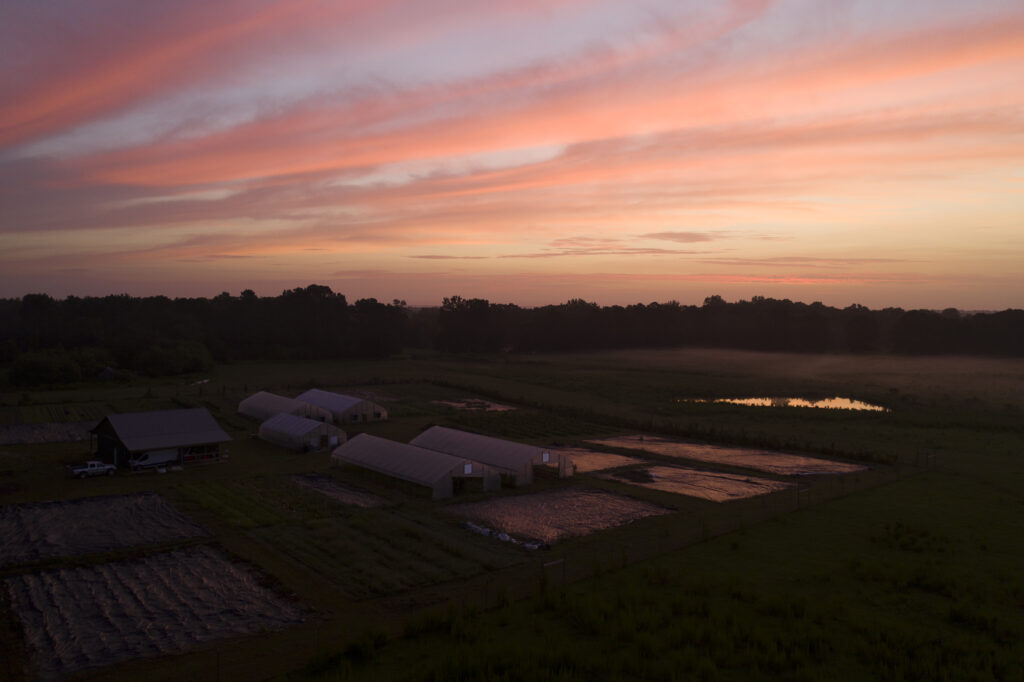
Read our first land dispatch here.
This dispatch is about tax policy. I know. But stick with me!
President Biden’s American Families proposal has brought capital gains taxes into the spotlight recently and we think this is an important moment to talk about the impact taxes have on access to land. Plus, we know there are many amazing farmer advocates in our network who totally do want to talk about tax policy any day, any time. This one’s for you.
Why taxes?
First of all, why do we care about tax policy at Young Farmers?
Taxes are the primary way the U.S. government raises money to pay for the programs and policies that we advocate for as a Coalition. If you have ever secured a low-interest loan from the Farm Service Agency, received a Value Added Producer Grant, or farmed on land that was protected with a federally-funded conservation easement, tax revenue was involved. It matters how that money is raised and what is done with it.
Taxes are also a strong behind-the-scenes force, influencing numerous decisions related to land that property owners make. In particular, federal capital gains tax has a big impact on transition of farmland and its availability to the next generation of producers.
It is easy to question our focus on taxes as a lever for change. Tax breaks undeniably benefit existing landowners and tax policy is steeped in historic and ongoing racism. Even seemingly well-meaning tax policy (such as offering property tax reductions if land is kept in farming) can end up benefiting wealthy landlords while young farmers work the land under unstable lease arrangements.
But the possibilities are exciting. With a small change to the federal tax code it is possible to incentivize thousands of landowners across the country to change their behavior. The effects of that are hard to quantify, but could ultimately have a cascading effect of more land becoming available on a timeframe that works for farmers, shifting the dynamics of property ownership and access.
We are advocating for capital gains tax reform, along with partner organizations such as American Farmland Trust and Land For Good, in particular because it addresses two of the key issues with farm transitions: they are happening both too slowly and too fast for young farmers to have a point of entry.
Capital Gains & Land Transition
Capital gains tax is more or less exactly what it sounds like—a tax on the amount of financial gain an individual accumulates between when they buy an asset and when they sell it. This comes into play in a big way with land because the value tends to keep going up. Since 2006, average farm real estate value has increased by 73 percent, jumping 6 percent in the last year alone.
Here’s an example of how it works: say a landowner bought a 50-acre farm in 2006 for $90,000 and then is able to sell that farm for $158,000 in 2020. As a result of simply waiting for time to pass, they could have gained $68,000. This is simplified, of course, and doesn’t account for inflation, the amount they might have invested in the property, or the taxes they would have paid over those years. All of that could affect the actual price they would sell it for. Owning the land wasn’t free, but the landowner was able to gain financially from it in part because of its appreciation in value.
Capital gains taxes aim to equalize the profits that individuals generate from privately holding assets, such as land, and temper the massive inequality that can result over generations. This is important, especially since policy has been explicitly used to ensure that farmland ends up in the hands of White landowners in the United States, resulting in deeply inequitable access to this resource.
However, there is a major loophole when it comes to capital gains taxes and farmland. If a landowner waits until they die and simply lets their children inherit the land rather than selling in their lifetime, they pay no capital gains tax on the sale and their heirs receive a step up in basis on the asset. (“Basis” simply refers to what the owner originally paid for the land—$90,000 in our example.) For tax purposes, the current market value becomes the new base value of the property ($158,000). If the heirs sold the land a few years later for $160,000, the capital gains they would be taxed on would only be $2,000.
It’s a tagline Geico can only dream of: you just saved a bunch of money by doing nothing.
Too Fast & Too Slow
As a result, landowners are, understandably, averse to selling. Simply put, they’re waiting to die. This step up in basis provision is incentivizing exactly what young farmers don’t need—a lot of aging landowners with no reason to make their land available for purchase within their lifetime. For young farmers who desperately need land now, this is too slow.
At the same time, if the landowner’s heirs are not farmers themselves they may sell the inherited land—often quickly—in order to maximize profit, avoid capital gains, and be done with the messiness of managing tangible property. These sales happen too fast. Young farmers can’t get a foot in the door while the landowners are alive, and they can’t compete with the speed of the sale once they’ve died. It’s a lose-lose situation.
In 2014, USDA predicted that nearly 100 million acres of farmland would change hands in the next five years. Yet, only 21 million of those acres would be made available to non-family members. With 75 percent of young farmers and ranchers not coming from a farming family, this represents a significant disadvantage that capital gains tax policy is only contributing to.
American Families Plan
In April 2021, the Biden administration introduced the American Families Plan, which is currently before Congress for approval. It accompanies the American Rescue Plan and American Jobs Plan, a set of proposals designed to stimulate and rebuild the American economy following the COVID-19 pandemic.
The American Families package—which would provide benefits such as free education, childcare support, and unemployment insurance reform—costs a lot of money. To pay for it, Biden has proposed taxing the wealthy, in part by raising the top federal capital gains tax rate from 20 percent to 39.6 percent and ending the practice of stepped up basis for individuals who inherit assets over $1 million in value (or up to $2 million for married couples).
USDA released an accompanying statement assuring farmers that the plan includes a special protection for family-owned farms and businesses, “deferring any tax liability on family farms as long as the farm remains family-owned and operated.” USDA also pointed out that the exclusion could be as high as $2.5 million for married couples if the farm also includes a family home.
Our Position
Biden’s tax plan proposes taxing the wealthy by eliminating the step up in basis. We support that, especially when it comes to equalizing the wealth accumulation that is happening around farmland. And, although we don’t see it impacting many of our members (given the $2.5 million exclusion), we’re glad farmers are being considered in the rollout of this plan. Yet, we have two main concerns (and suggestions):
- The exclusion for family farms is too narrow of a focus. We are in the midst of a massive transition of agricultural land and are aware that deep inequity exists in who has access to land ownership and access. With seventy five percent of young farmers not growing up in farm families, and particularly farmers of color experiencing generations of exclusion from property ownership, we must write policies that support and acknowledge young people entering agriculture beyond the family farm structure. The exclusion should be broadened to account for young farmers, and especially farmers of color, who do not come from farm families. In addition, it should be flexible enough to apply to non-individual ownership structures, such as cooperatives.
- This policy doesn’t go far enough to incentivize transfers during lifetime, instead of after death. What if the step up in basis wasn’t just a loophole to eliminate? What if it was used as a tool to create tax policy that provides young farmers and farmers of color with the opportunity to access the land they critically need while supporting retiring farmers? What if selling land to a young farmer or farmer of color qualified the land for a step up in basis? No waiting to die. Landowners would be incentivized to sell during their lifetime, cashing in on the equity they’ve likely built in their land to fund their retirement, and young, diverse farmers would be given the opportunity to be the first in line. A landowner should be able to access a step up in basis and exclusion from capital gains taxes for sales to young farmers and farmers of color that happen within the landowner’s lifetime.
Capital gains changes are one small step. And addressing capital gains tax is just one of many ways that we can engage in tax code policy change. We need so much more policy change to actually make that land affordable and accessible to young people, and to support them as they build viable careers growing food and navigating climate change, but it’s a start.
